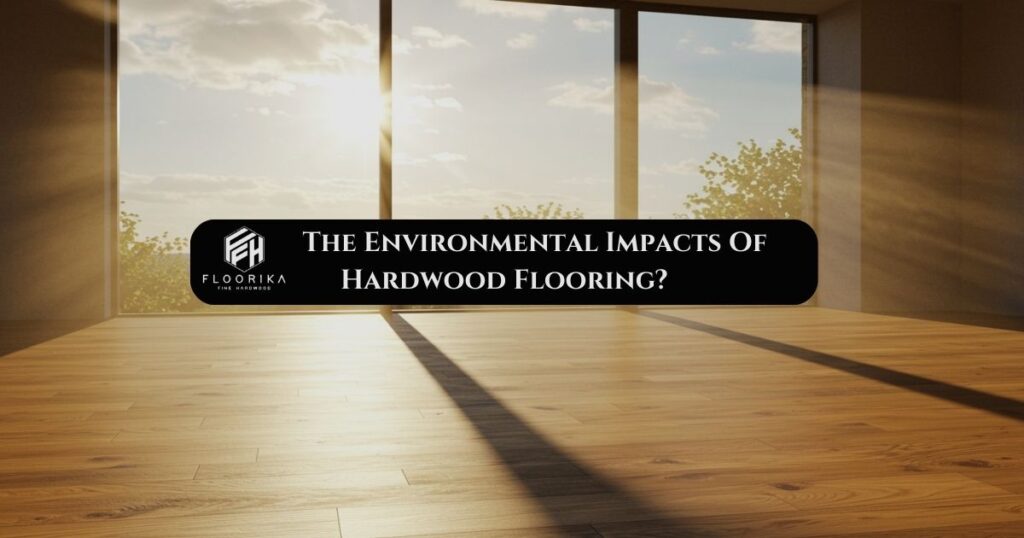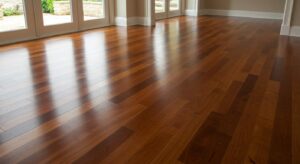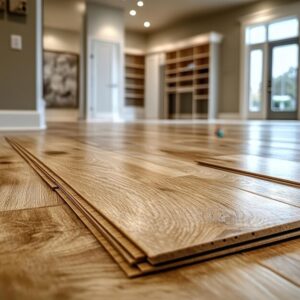Hardwood flooring adds timeless charm, warmth, and long-lasting quality to a home, but what does it mean for the environment? As homeowners become more mindful of their ecological footprint, it’s important to look beyond appearances and understand the broader impact of our design decisions. The answer isn’t black and white, but when sourced and managed responsibly, hardwood flooring can be an environmentally conscious choice.
In this article, we’ll discuss five key environmental impacts of hardwood flooring to help you make smarter, more sustainable choices.
Renewable and Natural Materials
One of the most compelling reasons to choose hardwood flooring is that it’s a renewable resource. When harvested from sustainably managed forests, hardwood trees are replanted to ensure long-term ecological balance. Many suppliers today follow strict environmental standards, such as those set by the Forest Stewardship Council (FSC), ensuring that every board you walk on comes from a responsibly managed source.
This renewability sets hardwood apart from synthetic options like vinyl or laminate, which are often petroleum-based and contribute to plastic waste. Hardwood, on the other hand, is a biodegradable material. It’s a choice that not only complements your home’s style but also supports responsible resource use and forest conservation when sourced the right way.
Long Lifespan Means Less Waste
One of the biggest environmental advantages of hardwood flooring is its durability. When properly maintained, hardwood can last for generations. It resists wear and tear better than many other flooring types and doesn’t need to be replaced every few years like carpet or cheaper alternatives. This long lifespan significantly reduces the amount of waste sent to landfills over time.
And when it start to show signs of aging? Hardwood can be sanded and refinished multiple times. That means you get a refreshed look without the cost or waste of replacement. Choosing hardwood isn’t just an investment in style; it’s a decision that reduces consumption and helps conserve resources in the long run.
Energy Efficiency for Indoor Comfort
Wood is a natural insulator, which means it can help regulate your home’s interior temperature more efficiently. It retains heat better than tile or stone, making your space feel warmer in winter and reducing the need for excessive heating. That translates into lower energy use and savings on utility bills — all while keeping your home cozy and inviting.
In warmer seasons, hardwood flooring works well with rugs and proper insulation to help maintain a cool, balanced indoor climate. Its compatibility with radiant heating systems adds another layer of efficiency, making it a smart option for those looking to reduce their environmental footprint while enjoying year-round comfort.
Improved Indoor Air Quality
Hardwood flooring can play a significant role in maintaining better indoor air quality, which is an often-overlooked environmental factor. Unlike carpet, which traps dust, pet dander, and allergens, hardwood has a solid, smooth surface that’s easy to clean and doesn’t harbor irritants. This makes it a healthier option, especially for people with allergies or asthma.
In addition, many modern hardwood flooring products are treated with low-VOC (volatile organic compounds) finishes. This minimizes the release of chemicals into the air and helps create a cleaner, fresher indoor environment. It’s a flooring choice that promotes both physical well-being and peace of mind.
Recyclable and Reusable
Hardwood is one of the few flooring materials that can be repurposed at the end of its initial life. Instead of ending up in a landfill, old hardwood planks can be reclaimed and used in new construction, furniture making, wall accents, or even reused as flooring. This reusability gives hardwood an edge in sustainability, extending its life well beyond its first installation.
By participating in this kind of circular use, homeowners reduce their environmental impact and contribute to a culture of reuse rather than waste. Even reclaimed hardwood has its own appeal, often adding character and history to spaces while keeping materials in use and out of landfills.
Read More: What Are the Different Patterns That Hardwood Floors Can Be Installed In?
Looking for Eco-friendly Hardwood Flooring?
If you’re looking for eco-friendly hardwood flooring that combines sustainability with elegance, Floorika Fine Hardwood is here to help. Our hardwood floors are responsibly sourced and produced with sustainability in mind, ensuring that your home not only looks beautiful but also minimizes its environmental footprint.
Protect your home with eco-conscious hardwood flooring—contact us today to explore our sustainable and durable hardwood options!










